Inflation Summary:
- Annual Inflation was virtually unchanged from 1.18% in October to 1.17% in November.
- CPI Index fell slightly from 260.388 in October to 260.229 in November.
- Monthly Inflation for November was -0.06%, October was 0.04%, September was 0.14%, August was 0.32%, July was 0.51%, June was 0.55%, May was 0.002%, April was -0.67%, March was -0.22%, February was 0.27%.
- Next release January 13th
Annual Inflation Chart:
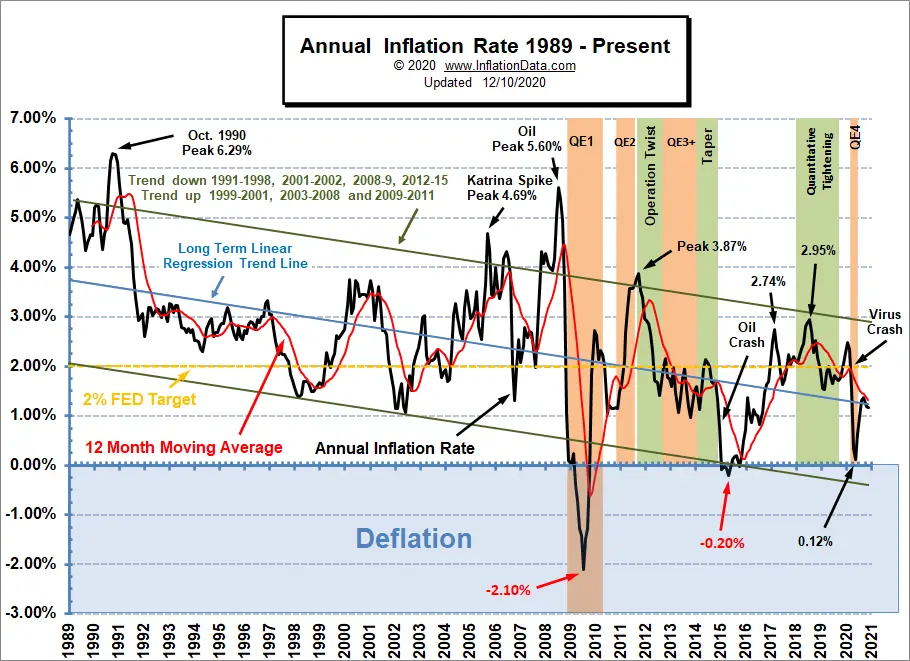 Looking at the Annual Inflation Chart since 1989 we can see a marked downward trend.
Looking at the Annual Inflation Chart since 1989 we can see a marked downward trend.
Current Inflation Situation
Looking at just the most recent 10 years the trend is less obvious. Inflation bottomed at 0.12% in May before climbing to 1.37% in September and falling to 1.18% in October. But the Linear Regression Line is still tilted slightly downward.
BLS Commissioner’s Inflation Report:
According to the BLS commissioner’s report, “The Consumer Price Index for All Urban Consumers (CPI-U) increased 0.2 percent in November on a seasonally adjusted basis after being unchanged in October, the U.S. Bureau of Labor Statistics reported today. Over the last 12 months, the all items index increased 1.2 percent before seasonal adjustment. The seasonally adjusted increase in the all items index was broad-based, with no component accounting for more than a quarter of the increase. The food index declined in November, as a decrease in the food at home index more than offset a small increase in the food away from home index. The index for energy rose in November, as increases in indexes for natural gas and electricity more than offset a decline in the index for gasoline. “
So what the BLS is saying is that on a Seasonally Adjusted basis the monthly inflation rate was 0.2% in November (see September column below) and Seasonally Adjusted October monthly inflation is zero. On an unadjusted basis, annual inflation is 1.2%.
When we measure it to two decimals (on a non-adjusted basis) monthly inflation was 0.04% in October and -0.06% in November. While annual inflation was 1.18% in October and 1.17% in November.
Seasonally Adjusted Inflation Components Table
From the table above we can see that overall the Energy category was down -9.4% on an annual basis. Fuel Oil was down -26.4%. Used cars, on the other hand, were up 10.9%. Food was up 3.7%, Medical Care Services were up 3.2%, and apparel was down -5.2%. So we can see that not all products experience the same rate of changes in their prices.
Not Seasonally Adjusted Monthly Inflation Rates
Monthly inflation for June was 0.55% comprising the majority of the annual inflation since March and April’s deflation canceled out much of the rest of the year’s inflation.
| Jan | Feb | Mar | Apr | May | Jun | Jul | Aug | Sep | Oct | Nov | Dec | |
| 2016 | 0.17% | 0.08% | 0.43% | 0.47% | 0.41% | 0.33% | (0.16%) | 0.09% | 0.24% | 0.12% | (0.16%) | 0.03% |
| 2017 | 0.58% | 0.31% | 0.08% | 0.30% | 0.09% | 0.09% | (0.07%) | 0.30% | 0.53% | (0.06%) | 0.002% | (0.06%) |
| 2018 | 0.54% | 0.45% | 0.23% | 0.40% | 0.42% | 0.16% | 0.01% | 0.06% | 0.12% | 0.18% | (0.33%) | (0.32%) |
| 2019 | 0.19% | 0.42% | 0.56% | 0.53% | 0.21% | 0.02% | 0.17% | (0.01%) | 0.08% | 0.23% | (0.05%) | (0.09%) |
| 2020 | 0.39% | 0.27% | (0.22%) | (0.67%) | 0.002% | 0.55% | 0.51% | 0.32% | 0.14% | 0.04% | (0.06%) |
See: Monthly Inflation Rate for more information and a complete table of Unadjusted Monthly Rates.
For more information See Annual Inflation.
Federal Reserve Actions
According to the National Bureau of Economic Research (NBER) the U.S. has been in a recession since February (shaded area) after the longest boom in economic history. According to NBER the peak occurred in February 2020. Often their peaks will take a long time before people realize that things are not going well. It is, however, possible that the “recession” will be short-lived if the economy can get back on track especially in light of all the FED money pumping going on.
In the following chart, we see the Federal Reserve Total Assets have gradually increased over the last few months. This has made up for the decrease in assets (QT) from June 10th through July 8th 2020. When the FED shrunk assets at that time, several market commentators panicked assuming the market would crash as well.
At first glance, that decrease is worrying for the stock market. But if we look at the breakdown of the FED assets in the chart below we see that the entire decrease comes from “Liquidity Facilities” and not “Securities”. Liquidity facilities typically are near zero so they are simply returning to normal. For more information see Is the FED tightening?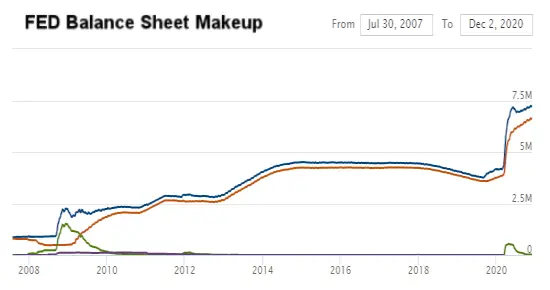
FED Funds Rate
In the chart below, we can see that the FED Funds Rate peaked at 2.42% in April 2019 at that point the FED began fearing that it was holding too tight and the stock market was suffering so it began easing. It leveled off in November at 1.55% where it stayed until February. At that point, COVID tanked the market, and the FED loosened rates to virtually zero (actually 0.05%) five one-hundredths of a percent. In June they moved it up to eight one-hundredths of a percent and then in July, it inched up another one-hundredth of a percent. Then in August, it moved up another one-hundredth of a percent. These increases are essentially symbolic it is still virtually zero. But even that was too much so in September through November the FED dropped it back to 0.09%.
For more info See NYSE ROC and MIP.
Misery Index
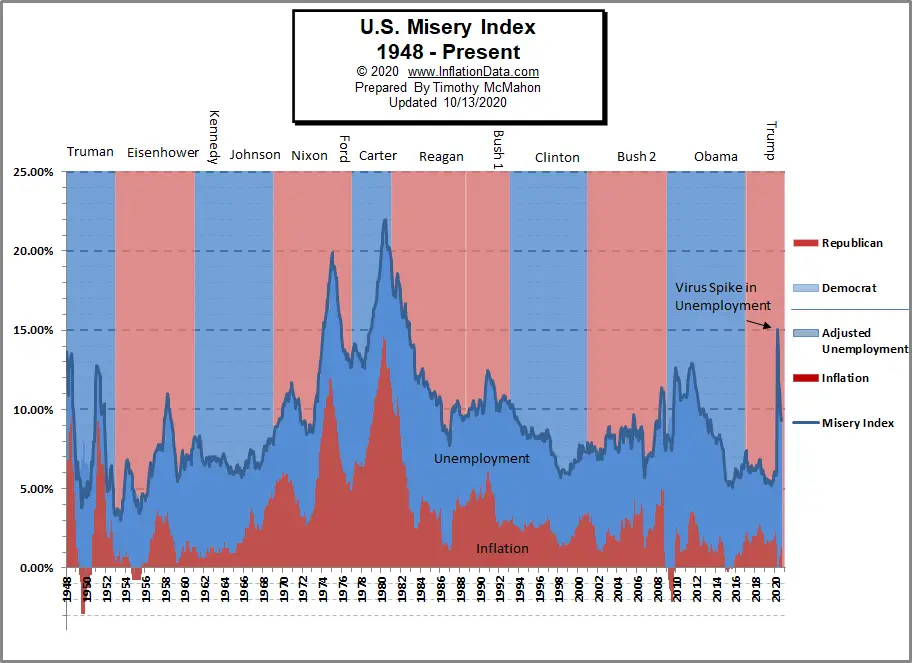 In September 2019, the Misery index was near all-time lows at 5.21%.
In September 2019, the Misery index was near all-time lows at 5.21%.
By March 2020, it had climbed slightly to 5.94%. But in April, due to the COVID-19 shutdown and consequent high unemployment, the Misery Index shot up to 15.03% based on 14.7% unemployment and 0.33% inflation. In May both inflation 0.12% and Unemployment 13.30% fell, resulting in a Misery index of 13.42%. By July unemployment had fallen to 10.2% and inflation had risen slightly to 0.99% resulting in a Misery index of 11.19%. In September, unemployment fell to 7.9% and inflation was virtually unchanged at 1.37%. In October both Unemployment and Inflation decreased. Unemployment fell to 6.9% and inflation was 1.18% resulting in a misery index of 8.08% down from 9.27% in September. In November, unemployment fell a much smaller amount to 6.7% and inflation fell virtually nil to 1.17% so the misery index was 7.87%.
[Read More…]
NYSE Rate of Change (ROC)©
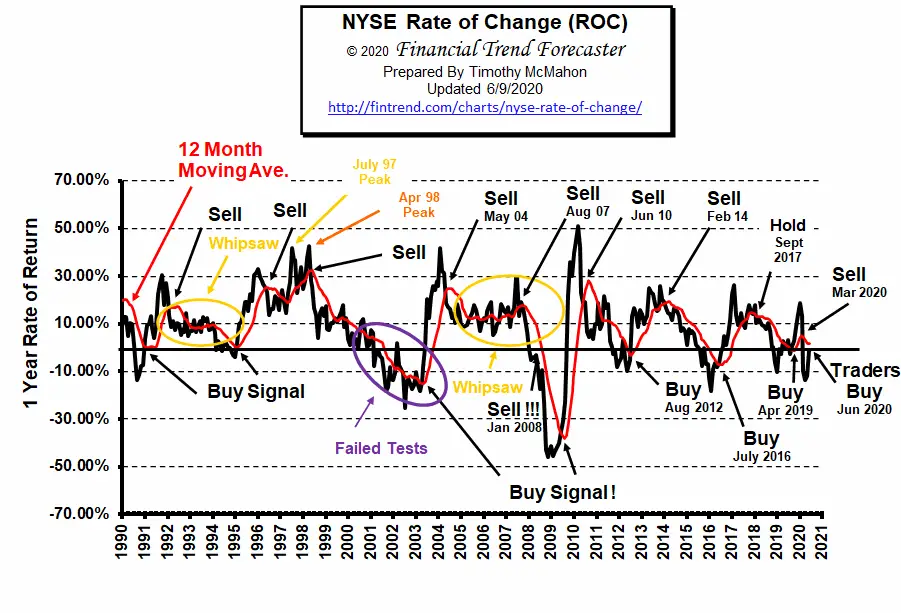
Buy Signal (Whipsaw)
Not surprisingly with all that has happened, 2020 has been a giant rollercoaster ride (aka. whipsaw) for the NYSE.
See the NYSE ROC for more info.
NASDAQ Rate of Change (ROC)©
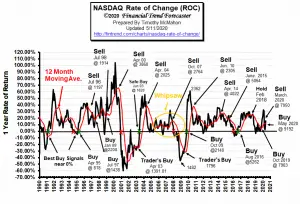
Hold Signal!
The ROC index is ABOVE its moving average. But as we said in the NYSE ROC these are uncertain times and combined with the lofty heights of the NASDAQ caution is warranted. Thus the HOLD Signal.
See NASDAQ ROC for more.
Moore Inflation Predictor (MIP)
This month the MIP is predicting a slightly down month. And is actually projecting relatively little in the way of change through March.
See: Moore Inflation Predictor for more info
Regional Inflation Information
The U.S. Bureau of Labor Statistics also produces regional data. So if you are interested in more localized inflation information you can find it here.
| AL | AK | AR | AZ | CA | CT | CO | DC | DE | FL | GA | GU | HI | IA |
| ID | IL | IN | KS | KY | LA | MA | MD | ME | MI | MN | MO | MS | MT |
| NC | ND | NE | NH | NJ | NM | NV | NY | OH | OK | OR | PA | PR | RI |
| SC | SC | SD | TX | UT | VA | VI | VT | WI | WA | WI | WV |
You Might Also Like:
From InflationData.com
- Emerging Technologies
- A Better Understanding of How IRS Audits Work
- September Inflation Virtually Unchanged
- The Price of Oil Denominated in Bitcoin
- How has Venezuela’s Bitcoin experiment Fared?
Read more on UnemploymentData.com.
- Digital Nomads: Reasons Why the Future of Work is Remote
- Fleet Management
- Employment Increased by 1/2 Million in November
- 6 Ways You Can Reset Your Career
From Financial Trend Forecaster
- The Death Of U.S. Shale Has Been Greatly Exaggerated
- China Ramps Up U.S. Crude Oil Imports
- Speed and Affordability: Cost of Internet Access Over Time
- New Technologies in the Oil and Gas Industry
From Elliott Wave University
- This High-Confident Trade Set-up Makes for Highly-Confident Traders
- Bond Market: “When Investors Should Worry”
- Does the Stock Market Really “See” the Future?
- Gold: See What This Fibonacci Ratio Says About the Trend
From OptioMoney.com
- 5 Things to Consider When Managing Money in a Relationship
- Should You Buy a Second Home?
- Learning to Trade from Video Tutorials
- How Saxo Bank Democratizes Trading and Investment
From Your Family Finances
- How to Financially Prepare Your Teenager For Buying Their First Car
- Things that Cause Your Car to Lose Value
- Small Ways to Save Money During the Holiday Season
- Money-Saving Tips for New or Expecting Parents
- 4 Auto Body Repairs That May (or May Not) Protect Your Car’s Value

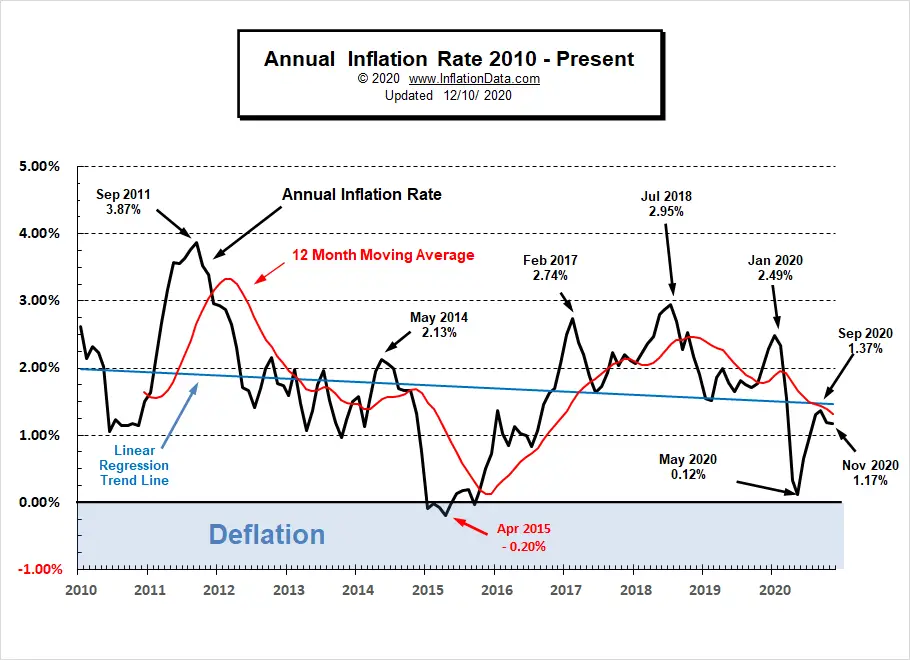
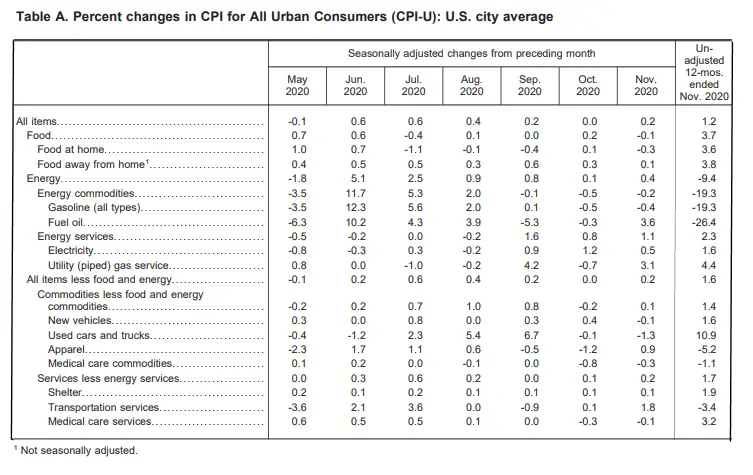
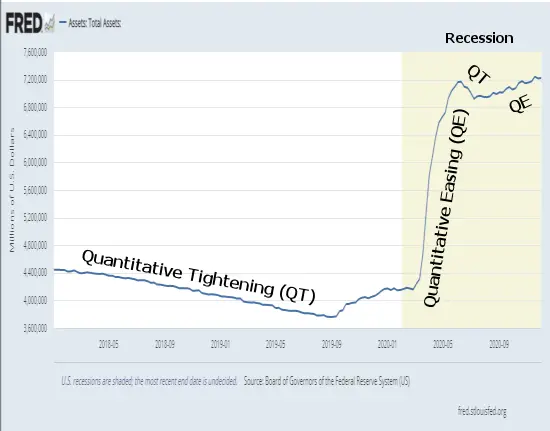
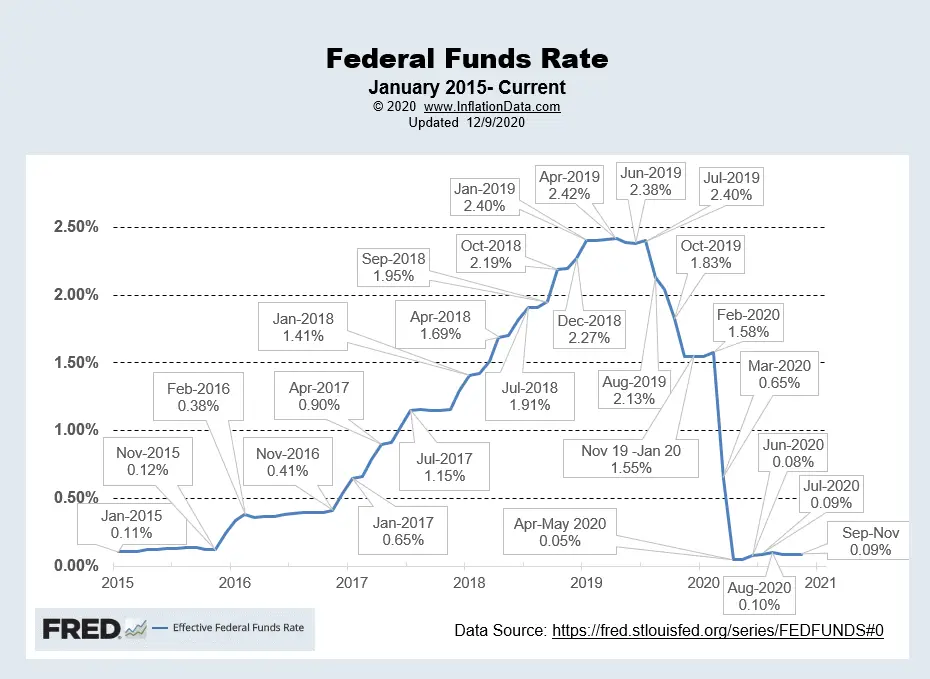

Leave a Reply